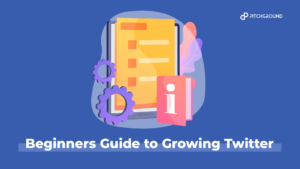Advertising an iPhone to our grandma won’t increase sales.
To market a product well, you need to target the right audience, and you can do this only when you know what marketing is segmentation.
Read the article below and get started with your marketing segmentation!
How much time would you spend each day if you had to create a new piece of content every single day?
Would you even be able to come up with enough ideas to fill the hours? If you answered yes to either question, you need to read this article. What Is Marketing Segmentation?
Marketing segmentation is defined as dividing customers into groups or segments based on their buying behavior and preferences.
The result is a group of customers who share similar characteristics. This allows marketers to deliver relevant messages and offers to each group.
Segmentation is essential in today’s highly competitive marketplace. Marketers should create customer segments representing specific trends or interests within their target audience.
In order to identify these segments, marketers need to collect data from existing and potential customers through various sources.
The most common types of market segmentation are demographic, psychographic, behavioral, and geographic.
These different segmentation types can be combined to form an effective marketing strategy.
Statistics
- According to a study by Bain & Company, 81% of executives found that segmentation was crucial for growing profits. (qualtrics.com)
- Bain also found that organizations with excellent market segmentation strategies enjoyed a 10% higher profit than companies whose segmentation wasn’t as effective over 5 years. (qualtrics.com)
- This brand would likely target marketing managers at larger companies (ex. 500+ employees) who can make purchase decisions for their teams. (blog.alexa.com)
- A Harvard Business School survey conducted in the US found that 95% of new products fail due to ineffective marketing segmentation. (useinsider.com)
- Another offer was explicitly aimed at corporate gift buyers – a market segment that Montblanc particularly appeals to – and resulted in a +30% uplift for that segment. (yieldify.com)
What is Marketing Segmentation?

Marketing segmentation is a strategic tool that helps marketers understand what they want to achieve. It provides them with information regarding how to reach those goals.
It involves identifying the needs of individual consumers and developing a plan to address those needs.
The goal of segmentation is to reduce the number of people who don’t fit into any one category. Companies use market segmentation to create unique products and services for each group of people.
Segmentation helps to reach the target audience more effectively. It makes it easier to determine which individuals respond best to specific campaigns.
For example, a company might sell two versions of its product: one version for men and another for women.
Both versions will contain all of the same features, but the packaging, color scheme, and the price will differ between the two.
The Benefits of Market Segmentation

Marketing experts recommend segmenting your customer base into different groups based on common characteristics.
For instance, you could segment your customers by gender, age, income level, or other demographic factors.
Segmentation helps you target specific messages to each group and can boost your marketing campaigns.
The key here is finding your market segments to better understand the people you’re trying to reach. Incorporating it into your marketing strategy can help reach the target market easier.
Below are five reasons why you should segment your audience:
1. Improve Data Quality
It’s hard to analyze data from one big mass of people. But analyzing data from multiple smaller segments makes analysis much easier and more accurate.
For example, let’s say you run a fitness center and want to learn about the types of workouts your members enjoy most.
You could survey everyone at once, but you could easily miss data points because no one felt comfortable answering specific questions.
Instead, try surveying a subset of your members first. Then see what type of information you get from those responses. Based on your results, you can make adjustments and surveys again to improve the quality of your data.
That kind of approach can lead you to better marketing strategies and decisions.
2. Increase Sales Conversion Rates
A second benefit of segmenting your market is improving your ability to convert leads into sales.
Consider this scenario. A direct mail company sends a mailing to 100,000 households. Of the 100,000, 50% respond to the campaign. That’s a 5,000-person response rate.
But the direct mail company has an average conversion rate of 10%. That means they send 10,000 pieces of mail out and receive 1,000 phone calls or e-mails from potential clients.
Now consider this alternative scenario. Instead of sending a letter to every household, the same company sends a letter to 500 households. Of these, 250 respond. That’s a 2,500-person response rate.
Yet the conversion rate remains the same — still 10%.
In short, you need to target your audience in order to increase their chances of responding positively to your offers.
Segmenting your audience allows you to focus on your most valuable prospects. This improves your chances of converting them into sales.
3. Gain Insightful Insights
Segmented audiences allow you to gain insight into your prospect’s buying behavior. Once you know what they’re looking for, you can create product offerings that meet their needs.
Take, for example, a software company that created a set of tools designed to help small businesses manage their finances.
It sent out letters to 200 companies asking for feedback on their product.
After receiving a positive response, it sent the tool kits to these companies.
Many of them were using Excel spreadsheets to track their finances. Yet many couldn’t afford the high costs associated with Excel.
Their solution was a free online budget management tool. Focusing only on this particular group of companies could save money while providing a superior product.
It gave them feedback on what their prospects needed, but it allowed them to provide a superior offering.
4. Reduce Your Costs
Another way that segmented markets reduce costs is through targeted ads.
An advertising agency might advertise across a large geographic area with a single ad. However, if the agency knows fewer people live in one city than in another, they may decide to advertise in that city instead of spending money on the rest of the country.
This strategy can eliminate costs by reducing how much advertising you pay.
Similarly, you can cut down on costs if you know which demographics you need to reach. For instance, if you have a new product line, you may want to test it first among men before investing in a full-scale campaign.
5. Improve Customer Service
You can also improve customer service by segmenting your market.
For example, let’s say you sell a product that requires some maintenance.
You could offer a discount to customers who buy the product after a specific date. Or perhaps you could provide a special deal to customers who purchase the product within a specific time frame.
By segmenting your market, you can make sure you’re reaching the right people with the right offer.
What are the Types of Marketing Segmentation

Market segmentation is one of the most effective tools for retailers to effectively identify their customers and target markets.
Understanding market segments helps retailers determine customer preferences, and, ultimately, create better marketing strategies and marketing plan.
In this article, we’re going to discuss five types of market segmentation:
1. Demographic Segmentation
Demographics are characteristics such as age, gender, ethnicity, marital status, income, and education level.
They are usually used to define groups of individuals within a specific population.
For example, you could group people based on their demographic information to understand whether there are differences between genders, ages, or income levels.
2. Psychographic Segmentation
Psychographics are attributes related to personality traits, attitudes, values, and beliefs. They include interest in fashion, music, travel, technology, politics, sports, and hobbies.
These factors influence consumer buying behaviors and purchasing decisions.
A person’s psychographic information is often collected via surveys or questionnaires.
3. Behavioural Segmentation
Behavioral segments describe consumer activity patterns and trends. For example, they may measure the frequency of purchases made by consumers over time.
This type of segmentation is also referred to as “lifestyle segmentation.”
4. Attitudinal Segmentation
Attitudinal segments describe consumer feelings about brands, products, services, companies, and advertising campaigns.
This type of analysis provides insights into consumer opinions about products, brands, and advertising campaigns.
5. Cognitive Segmentation
Cognitive segments refer to consumers’ perceptions of value and benefits associated with goods and services.
For example, cognitive segments may indicate whether consumers feel that a product is worth its price.
6. Geographic Segmentation
Geographic segmentation describes how different regions of the world differ from each other.
It helps marketers understand where consumers live, what language they speak, and what region of the country they come from.
7. Socioeconomic Segmentation
Socioeconomic segmentation refers to the distribution of wealth among various socioeconomic groups.
This type of segmentation aims to help businesses understand which groups have more money than others.
The critical point here is that these segments are defined using different criteria and methods, so it is essential to choose the right segmentation method for your business.
Common Segmentation Errors
Do’s:
- Make sure your segments are quantifiable and accurate.
- Focus on the money, not the segment.
- Be flexible, and don’t get stuck in your strategies.
Don’t’s:
- Don’t make your segments too small or specific.
- Don’t rely on one segment.
- Don’t use data from previous years.
- Don’t ignore demographics.
Key Takeaways:
Marketing Segmentation is used to identify targeted groups of customers who are more likely to purchase your product and services.
It also allows you to know what kind of customer to cater to. You can use this information to ensure your products are the right fit for each customer.
There are five main types of market segmentation: demographic, behavioral, attitudinal, cognitive, and psychographic. Each has its own set of advantages and disadvantages.
Choose the best marketing segmentation method for your company depending on how much information you have available. Incorporating any one of them will help reach your target customer.
Segmentation is an essential part of any marketing plan. Understanding your audience helps you create more vital marketing messages and offers that will resonate with them.



